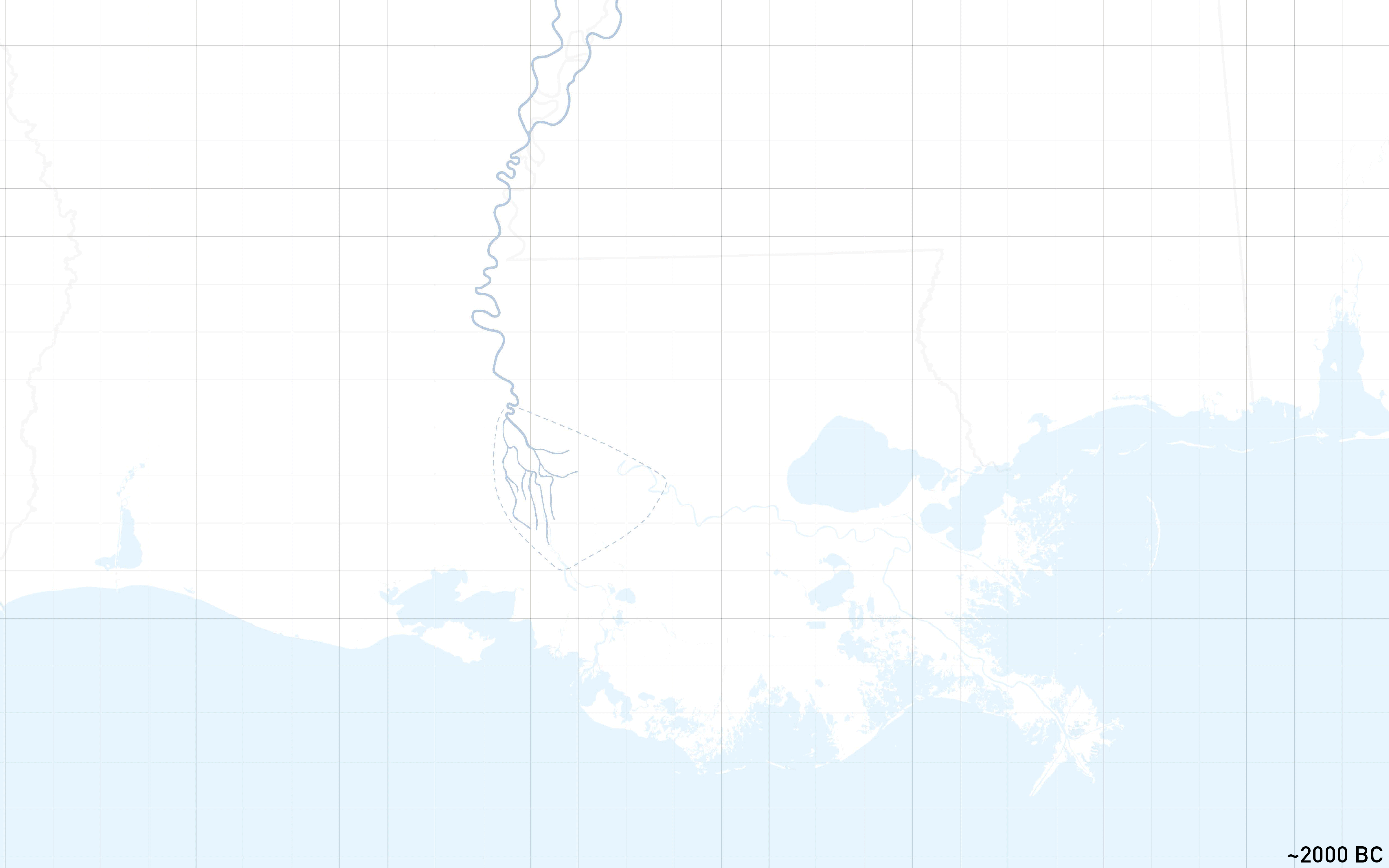NASEM Gulf Research Studio
Fall 2023 | Instructor: Liz Camuti
Navigating Change: Adapting Gulf Coast Shipping Infrastructures to an Evolving Green Economy
Gulf Coast Shipping Legacies and Environmental Impacts
The shipping industry in Louisiana has historically been a catalyst for the ongoing fortification of the Mississippi River in order to maximize industrial growth and profit through uninterrupted navigation. However, the extensive leveeing and dredging required to ensure this uninterrupted navigation through the Mississippi River Shipping Channel from Baton Rouge to the Gulf of Mexico has led to severe environmental degradation and land loss surrounding the river's delta. These issues have only been exacerbated by the ever-increasing draft of the bulk carriers and container ships that need extensive deepwater channels for navigation. In particular, the Mississippi River's maintained depth of fifty feet hinders the nurturing of riparian ecosystems and sediment buildup along the coast. As ongoing land loss threatens the resilience of both ecosystems and communities, the struggle to reconcile economic interests with the need to build more land along the coast has never been more apparent. This project explores the potential benefits of reforming shipping practices, adopting new navigation routes, and designing new port infrastructure that will regenerate the Mississippi River's land-building capacity and position the region as a critical player in a changing energy economy.
Reimagining Navigation Infrastructure as a Route to Resilience
Though the majority of Louisiana's coast is deteriorating, there remains an area that is thriving. South of Morgan City, at the end of the Atchafalaya River, small healthy deltas have been developing. This phenomenon can be attributed to a clear set of management and control strategies including the absence of levees and a deep-draft port and dredging methods that more closely align with natural water flows. This project draws lessons from this successful sediment deposition occurring along the Lower Atchafalaya River and adapts them to ease the ecological burden of the shipping industry on the Mississippi River. In this vision, the central navigation channel to the Gulf of Mexico is redirected from the Port of New Orleans to the Gulf Intracoastal Waterway (GIWW), transferring river traffic through the Port of Morgan City. This new route addresses the challenges of sediment deposition and land-building and presents a unique opportunity for the Mississippi River downstream of English Turn to transform into a network of diversions, safeguarding the future of human, economic, and ecological activities across the delta.
Embracing the GIWW, which is currently maintained at a depth of twelve feet, will necessitate a departure from the reliance on container ships, bulk carriers, and oil tankers for cargo transport in favor of smaller electric barges. The GIWW also possesses the potential to inherit more than a growth in barge traffic; it can also be utilized for sediment movement, linking a land-building solution to the broader coast.
In this new navigation system, the Port of Morgan City, formerly a central node in the offshore oil economy, becomes a critical site situated at the confluence of this new barge-based navigation system and an adapted dynamic delta. This project tests ideas for how the Port of Morgan City might remediate, consolidate, and adapt its existing functions to become a model for resilient and ecologically vibrant ports situated along the GIWW. It ultimately envisions the Port as the core of a regenerative Intracoastal economic framework that reconnects coastal communities to the distinct dynamics of a river-dominated delta.








